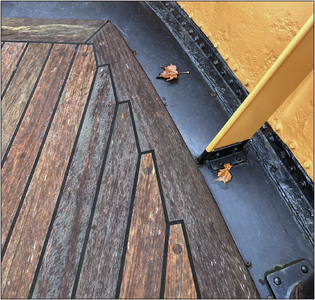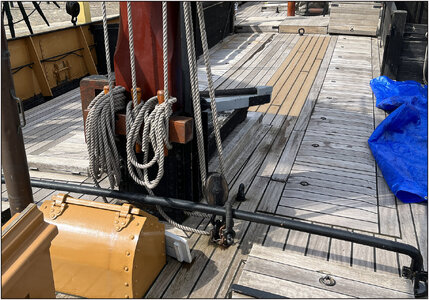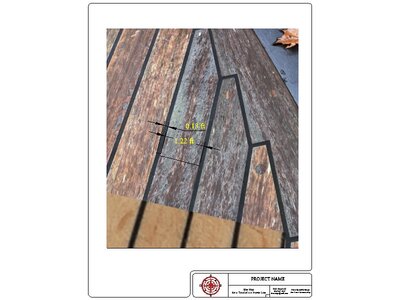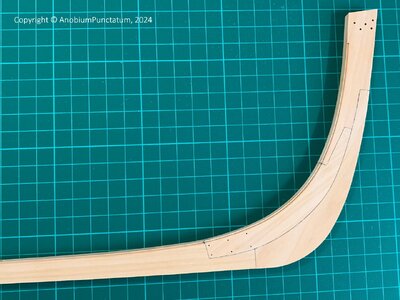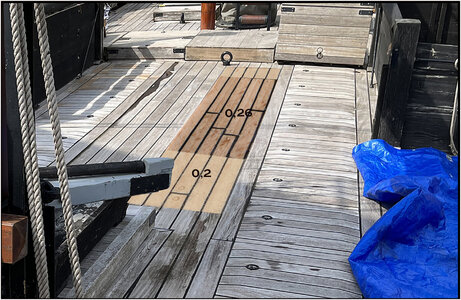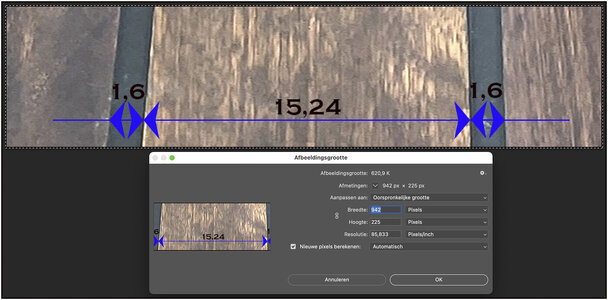Started with the planking of the deck.
The old specifications state: '
of Swedish greens 6" - 3", fastened with deck screws. To be caulked with two wires.'
A second specification states 'pitch pine' as the type of wood.
During the first restoration in Amsterdam, Oregon pine was chosen. The deck parts were attached with 3/8" carriage bolts, with the nuts on the bottom against the beam flanges. At the top, the holes were capped with 2 cm thick caps so that the deck could be planed later without any problems.
I could not find anything about the seams.
During the second restoration in Vlaardingen, Iroko was chosen. The deck parts were pressed into a Sikaflex adhesive layer on the steel deck and attached with approx. 2000 stainless steel threaded pins welded to the deck with ceramic rings and stainless steel musts. Covered with glued-in wooden plugs. The seams were sealed with Sikaflex and then sanded.
I still had a few beech planks lying around that Hans (Kolderstok) had sawn for me for the Bluenose. But I didn't use them in the end.
I sawed 3 mm slats from the wide strips. I laid a test piece with 0.33 mm black paper as seams. I found the seams a bit too thick in relation to the planks.
A second test in which I first glued the paper seams onto the slats under pressure. Then they become approximately 0.26 mm thick.
View attachment 461306
A = with 0.33 mm seams and imitation plugs of 1 mm;
B = with 0.26 mm seams and imitation plugs of 0.6 mm.
Both with a layer of linseed oil.
Via Photoshop I 'pasted' some parts of these test pieces onto a photo with the deck during the 2nd restoration:
View attachment 461307
See the A and B in the blue frames. Then the seams are still too thick in proportion. The planks themselves could also be a bit narrower.
Found another black paper of 0.20 mm. Made a test piece with the 3 mm slats. The 3 mm are still in my point of view a bit too thick, new slats of 2.8 mm and a new test piece made:
View attachment 461308
Here also both with a layer of linseed oil.
It doesn't make much difference .......... but it looks a bit better to me.
This is how it should look on the deck:
View attachment 461309
View attachment 461310
It is best to plank the deck in one go to maintain the continuous lines. Maybe I will already do a piece in the head and around the hatches.
Regards, Peter



